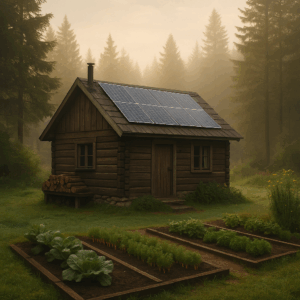Most people think about the power going out in terms of inconvenience. But when you’re trying to live with more clarity and self-reliance, even a short blackout is a wake-up call. Not because it’s apocalyptic—but because it shows how fragile “normal” really is.
Here are three things that almost always fail first in a blackout—and what you can do to stay ahead of them.
1. Water Access
If you rely on city plumbing or an electric well pump, your water stops when the grid does. No warning. No second chances.
What to do:
-
Store at least 4L of drinking water per person per day (7-day minimum)
-
Keep a gravity-fed water filter on hand (Sawyer, Berkey, or DIY)
-
Fill a bathtub or large container as soon as the power flickers
Off-grid tip: A rain barrel and tarp funnel setup can keep your reserve topped up if you live in a rainy climate.
2. Cold Chain (Fridge + Freezer)
Most refrigerated food starts to spoil after just 4–6 hours without power. Freezers may last a bit longer, but not much.
What to do:
-
Keep a cooler with long-life ice packs or frozen bottles
-
Don’t open fridge/freezer unless necessary (preserve thermal mass)
-
Stock a 3-day supply of no-cook shelf-stable meals
Off-grid tip: Passive cold storage (root cellars or buried bins) are excellent long-term alternatives.
3. Communication
Your phone is only as good as the last charge—and once the towers go dark or your router dies, digital silence hits fast.
What to do:
-
Keep a charged power bank and solar panel ready
-
Own a battery-powered or hand-crank radio
-
Print out emergency contacts and write them down
Off-grid tip: Walkie-talkies or mesh apps (like Bridgefy) can help with short-range comms if networks fail.
Build Capability Before the Crisis
Preparedness isn’t about predicting disaster—it’s about responding with clarity when things shift. If you can cover these three failure points, you’re already more ready than most.
Our free 7-Day Grid Down Survival Pack walks you through how to stay safe, warm, and fed during your first off-grid test—planned or not.


